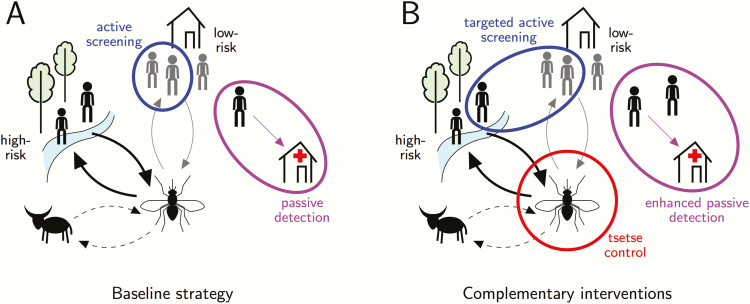Figure 1.
Schematic of the human African trypanosomiasis transmission cycle, showing baseline medical interventions (A) and complementary interventions using currently available tools considered in this study (B) (adapted from [30]). A, Baseline interventions: passive detection of infected individuals via medical facilities (purple), and active screening (blue). Models with high- and low-risk people assume that high-risk people receive more bites from tsetse (thicker arrow) and only low-risk people are actively screened. B, Additional interventions: (1) Tsetse control (red) directly impacts all transmissions; (2) enhanced passive surveillance improves access and detection at health facilities (purple); (3) targeted active screening improves uptake of active screening campaigns and high-risk people are assumed to participate equally to low-risk people (blue). In some model variants, animals act as a sink to tsetse bites but do not contribute to transmission (dashed arrow).

